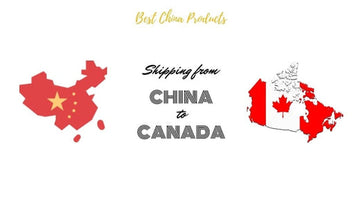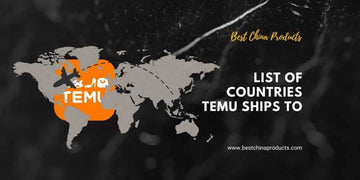Have you ever wondered if Motorola is a Chinese brand? I know I did when I first heard about its acquisition by Lenovo.
But the truth might surprise you! In this post, I’m going to take you through Motorola’s history and clear up the confusion about where this iconic brand really comes from.
Is Motorola A Chinese Brand?

No, Motorola is not a Chinese brand. Motorola was originally an American company and is historically associated with the United States. It was founded in 1928 in Schaumburg, Illinois.
Although Motorola Mobility, the mobile device division of Motorola, was briefly owned by Google and later acquired by Lenovo, a Chinese multinational technology company, Motorola as a brand and its heritage remain rooted in the United States.
Brief History of Motorola and its Origins
Motorola is a renowned American telecommunications company that has played a significant role in the development of mobile communication technologies. Here is a brief history of Motorola and its origins:
- Founding and Early Years (1928-1940s):
Motorola was founded on September 25, 1928, in Schaumburg, Illinois, by Paul V. Galvin and his brother Joseph Galvin.
Initially named Galvin Manufacturing Corporation, the company focused on manufacturing battery eliminators for radios.

In 1930, they introduced the brand name "Motorola" for their car radios. The name was derived from "motorcar" and "Victrola" (a popular brand of phonograph at the time).
Motorola grew during the 1930s by producing car radios and two-way radio systems for police cars and other emergency services.
- Expansion into Communications (1950s-1970s):
In the 1950s, Motorola made significant advancements in the field of two-way radio communication.
They developed the first commercially successful car radio with a push-button tuning feature called the "Motorola Deluxe" and introduced the first walkie-talkie for public safety use.
In the 1960s, Motorola played a crucial role in the space industry by providing communication equipment for NASA's Apollo program, including the radios used during the moon landing in 1969.
- Mobile Phones and Semiconductors (1980s-1990s):
Motorola made a groundbreaking leap in the 1980s when it introduced the world's first commercial handheld cellular phone, the Motorola DynaTAC 8000X, in 1983.

This achievement marked the beginning of the mobile phone era. In the following years, Motorola released several successful mobile phone models, including the iconic Motorola StarTAC in 1996, which was one of the first flip phones.
Alongside mobile phones, Motorola also became a major player in the semiconductor industry, manufacturing microprocessors and other electronic components.
- Split and Reorganization (2000s-2010s):
In 2011, Motorola underwent a significant transformation when it split into two separate entities. The mobile division was spun off into Motorola Mobility, focusing solely on mobile devices, while the enterprise-focused division became Motorola Solutions.

This split aimed to streamline operations and better address the specific needs of each market segment. Motorola Mobility was later acquired by Google in 2012 but was subsequently sold to Lenovo in 2014.
- Recent Developments:
Under Lenovo's ownership, Motorola continued to produce innovative smartphones and expand its product lineup.
They introduced popular devices like the Moto X, Moto G, and Moto E series, gaining recognition for providing affordable yet feature-rich smartphones.
Motorola also embraced modular design with the introduction of the Moto Z series, which allowed users to attach various modules, called Moto Mods, to enhance functionality.
While this is a brief overview of Motorola's history and origins, it showcases the company's pivotal contributions to the development of mobile communication technology and its enduring presence in the telecommunications industry.
Acquisition by Lenovo and its Impact
Motorola Mobility, the mobile device division of Motorola, was indeed acquired by Lenovo, a Chinese multinational technology company.
The acquisition took place in 2014 when Google, which had previously acquired Motorola Mobility in 2012, sold the division to Lenovo.
The deal was valued at approximately $2.91 billion. Lenovo's acquisition of Motorola Mobility was seen as a strategic move to expand its presence in the global smartphone market and strengthen its position as a leading technology company.
The acquisition provided Lenovo with an established brand name, a portfolio of popular smartphones, and access to Motorola's research and development capabilities.
Motorola's Manufacturing and Supply Chain Operations
Motorola's manufacturing and supply chain operations have undergone changes over the years, influenced by factors such as market dynamics, technological advancements, and corporate strategies.
Here are some key points regarding Motorola's manufacturing and supply chain operations:
- In-house Manufacturing: In the early years, Motorola had its own manufacturing facilities where it produced a range of products, including radios, car radios, and mobile phones.
The company had control over the entire manufacturing process, from component sourcing to final assembly.
- Global Manufacturing Footprint: As Motorola expanded its product portfolio and global presence, it established manufacturing facilities in various countries worldwide.
These facilities were strategically located to cater to regional markets and benefit from local resources, labor, and cost advantages.
Motorola had manufacturing sites in countries like the United States, Mexico, Brazil, China, India, and others.
- Outsourcing and Contract Manufacturing: Like many other technology companies, Motorola eventually shifted some of its manufacturing operations to contract manufacturers.
This allowed the company to leverage the expertise and scale of third-party manufacturers while focusing on core competencies such as design, innovation, and marketing.

Contract manufacturers like Flextronics (now Flex Ltd.) and Foxconn (Hon Hai Precision Industry Co., Ltd.) were involved in manufacturing Motorola devices during certain periods.
- Supply Chain Management: Motorola has emphasized efficient supply chain management to ensure timely delivery of components and products.
This involves coordinating with suppliers, managing inventory, optimizing logistics, and implementing quality control measures.
Effective supply chain management helps minimize costs, streamline operations, and meet customer demands.
- Evolution of Mobile Phone Manufacturing: In the early days of mobile phones, Motorola manufactured devices in-house.
However, as the mobile phone industry grew more competitive and complex, the trend shifted towards outsourcing manufacturing to specialized facilities with advanced capabilities. This allowed for faster production, lower costs, and scalability to meet market demands.

- Lenovo's Influence: After Lenovo's acquisition of Motorola Mobility, there may have been changes in the manufacturing and supply chain operations to align with Lenovo's existing practices and strategies.
Lenovo has its own established supply chain and manufacturing network, and it likely integrated and optimized the operations of Motorola Mobility within its overall framework.
Products and Innovations of Motorola
Motorola has been involved in various product lines and has introduced numerous innovations throughout its history.
- Two-Way Radios: In its early years, Motorola gained prominence by manufacturing two-way radios for police cars and other public safety services.
These radios provided efficient communication and contributed to the advancement of emergency communication systems.
- Car Radios: Motorola played a significant role in the development of car radios. In the 1930s, they introduced the brand name "Motorola" for their car radios, and their products became popular for their quality and performance.
- Mobile Phones: Motorola is recognized as one of the pioneers in the mobile phone industry.

They introduced the world's first commercial handheld cellular phone, the Motorola DynaTAC 8000X, in 1983. The iconic "brick" phone marked a revolutionary milestone in mobile communication.
- MicroTAC and StarTAC: Motorola introduced a series of innovative mobile phone models. The Motorola MicroTAC, launched in 1989, was one of the earliest flip phones, featuring a compact design.
It was followed by the Motorola StarTAC in 1996, which became one of the world's first popular flip phones.
- RAZR Series: The Motorola RAZR series, launched in the early 2000s, gained immense popularity. These slim and stylish clamshell phones became iconic and were known for their cutting-edge design and innovative features.

- Moto X, Moto G, and Moto E: In the smartphone era, Motorola introduced the Moto X, Moto G, and Moto E series, targeting different market segments.
These devices aimed to provide quality smartphones at affordable prices while offering customizable features and a near-stock Android experience.
- Moto Mods: Motorola embraced modular design with the introduction of the Moto Z series. These smartphones featured a magnetic connector on the back that allowed users to attach various modular accessories called Moto Mods.
The Moto Mods expanded the functionality of the devices, enabling features like extended battery life, improved camera capabilities, and enhanced audio experiences.
- Push-to-Talk Technology: Motorola developed push-to-talk (PTT) technology, enabling instant communication over cellular networks.

This innovation facilitated quick and convenient communication for professionals in industries such as public safety, construction, and transportation.
- Public Safety Solutions: Motorola has been a leading provider of communication solutions for public safety organizations.
They have developed advanced radio systems, dispatch consoles, and software applications to enable efficient and reliable communication during critical situations.
- Advanced Communication Infrastructure: Motorola has developed and deployed various communication infrastructure solutions, including cellular network equipment, radio network systems, and broadband technologies.
These solutions support reliable and secure communication for businesses, government agencies, and mobile network operators.
Why did Google sell Motorola?
Google sold Motorola Mobility, the mobile device division of Motorola, for strategic and financial reasons. Acquiring Motorola's patent portfolio was a key motivation, providing protection for Android.
Selling Motorola avoided conflicts with other Android manufacturers and allowed Google to focus on software and online services.
Motorola's financial difficulties and losses also factored into the decision. Lenovo's interest and expertise in consumer electronics played a role, enabling them to expand globally.
The sale benefited both parties, with Google refocusing on core operations and Lenovo gaining a well-known brand and technology.
Motorola Phones 2020 - Present Day
The Motorola Razr (2020), also known as the Razr 2019, brought back memories of the early 2000s when flip phones reigned supreme.
With a sleek, folding display that vertically mimics the classic Razr V3, this modern device aimed to blend the past with the present.
Designed to elicit nostalgia, the Razr 2020 incorporated advanced features such as a fingerprint sensor and an Android operating system, all while wrapped in a familiar and beloved form factor.

However, upon its release in February 2020, the reception of the Razr (2020) was mixed. Priced at $1,499 and initially exclusive to Verizon Wireless, reviewers found fault in its specifications, battery life, and overall build quality.
Critics argued that the price tag did not align with the device's capabilities, leading some to question its value. Despite these criticisms, the design and software were widely praised, emphasizing the phone's aesthetic appeal and user-friendly interface.
Responding to feedback, Motorola Mobility introduced the second generation of the Razr series - the Razr 5G - on September 9, 2020.
This new iteration addressed many of the concerns raised by consumers and reviewers alike. However, similar criticisms persisted, with some asserting that the improved model still fell short in terms of its price point compared to its specifications.

Undeterred, Motorola has continued to expand the Razr lineup with subsequent releases. In August 2022, they introduced the Motorola Razr (2022), incorporating further enhancements to the foldable smartphone experience.
And in June 2023, they unveiled the Motorola Razr 40 and Motorola Razr 40 Ultra (known as Motorola Razr Plus in the U.S.), further refining their offering and pushing the boundaries of what a foldable device can achieve.
Motorola's venture into foldable smartphones through the Razr series demonstrates the company's commitment to innovation and nostalgia-driven design.
While the journey has had its share of ups and downs, Motorola continues to evolve and refine its foldable smartphones, striving to strike the perfect balance between iconic aesthetics and cutting-edge technology.
Related






